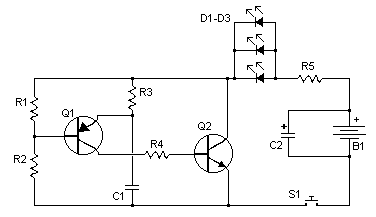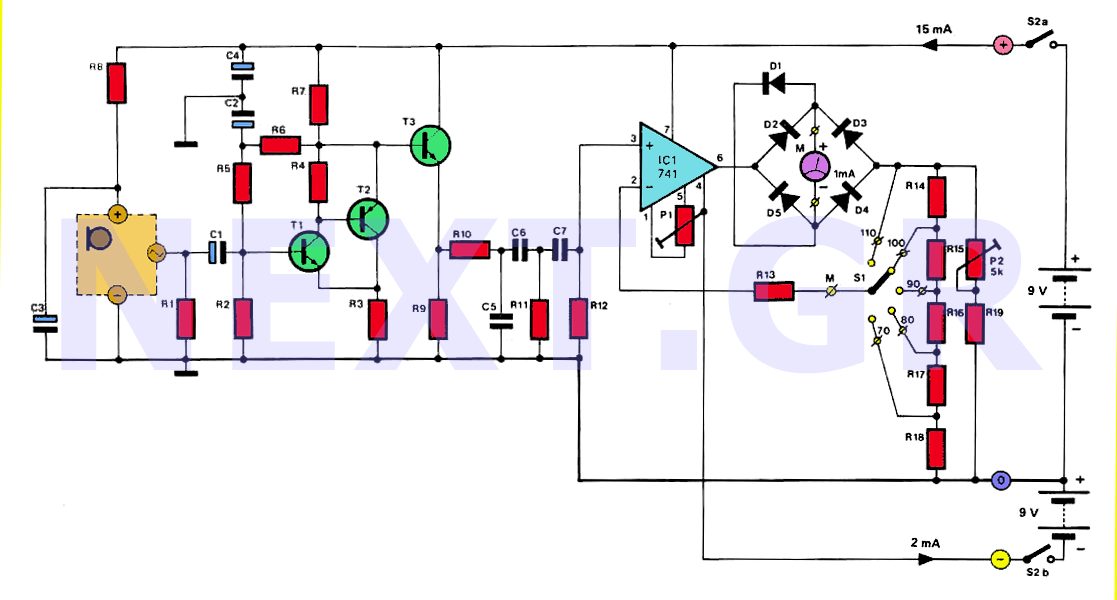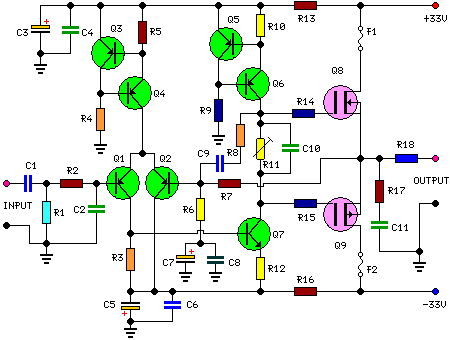
IR Remote Control Jammer circuit

Displeased with your younger brother's choice of TV channels? Frustrated by the volume level your spouse sets on the stereo? Looking to create a bit of mischief? This circuit effectively jams most infrared (IR) remote signals. It emits a continuous stream of pulsing IR light that disrupts the receiver by corrupting the data transmission.
This circuit operates by generating a modulated infrared light signal that interferes with the normal operation of IR remote controls. It typically consists of an IR LED, a modulation circuit, and a power source. When activated, the circuit drives the IR LED to emit light at a specific frequency, which is often set to match the common modulation frequencies used by IR remotes (usually around 36 to 40 kHz).
The modulation circuit can be designed using a simple astable multivibrator configuration with a 555 timer or a microcontroller capable of generating PWM signals. The output from this circuit controls the IR LED, causing it to blink rapidly. The pulsing nature of the emitted IR light creates a noise floor that overwhelms the signals sent from legitimate remote controls, rendering them ineffective.
The circuit's effectiveness can be adjusted by varying the duty cycle of the modulated signal or the intensity of the IR LED. A higher intensity or a more complex modulation pattern can increase the jamming range, making it possible to disrupt remote signals from greater distances.
Power supply considerations are also important; the circuit can be powered by a standard 9V battery or a DC power supply, ensuring that the IR LED receives sufficient current for optimal performance. Additionally, incorporating a heat sink or using an LED with a high power rating may be necessary to prevent overheating during extended use.
Safety precautions should be observed, as jamming devices can interfere with legitimate remote control operations, and their use may be subject to legal restrictions in certain jurisdictions. It is essential to ensure that this circuit is used responsibly and ethically, considering its potential to disrupt communication between devices.Don`t like your little brother`s TV channel selection? Hate the volume your wife sets the stereo at? Want to just annoy someone? This circuit does all that and more by jamming most IR remote signals. The circuit releases a flood of pulsing IR light that confuses the reciever by corrupting the data stream.. 🔗 External reference
This circuit operates by generating a modulated infrared light signal that interferes with the normal operation of IR remote controls. It typically consists of an IR LED, a modulation circuit, and a power source. When activated, the circuit drives the IR LED to emit light at a specific frequency, which is often set to match the common modulation frequencies used by IR remotes (usually around 36 to 40 kHz).
The modulation circuit can be designed using a simple astable multivibrator configuration with a 555 timer or a microcontroller capable of generating PWM signals. The output from this circuit controls the IR LED, causing it to blink rapidly. The pulsing nature of the emitted IR light creates a noise floor that overwhelms the signals sent from legitimate remote controls, rendering them ineffective.
The circuit's effectiveness can be adjusted by varying the duty cycle of the modulated signal or the intensity of the IR LED. A higher intensity or a more complex modulation pattern can increase the jamming range, making it possible to disrupt remote signals from greater distances.
Power supply considerations are also important; the circuit can be powered by a standard 9V battery or a DC power supply, ensuring that the IR LED receives sufficient current for optimal performance. Additionally, incorporating a heat sink or using an LED with a high power rating may be necessary to prevent overheating during extended use.
Safety precautions should be observed, as jamming devices can interfere with legitimate remote control operations, and their use may be subject to legal restrictions in certain jurisdictions. It is essential to ensure that this circuit is used responsibly and ethically, considering its potential to disrupt communication between devices.Don`t like your little brother`s TV channel selection? Hate the volume your wife sets the stereo at? Want to just annoy someone? This circuit does all that and more by jamming most IR remote signals. The circuit releases a flood of pulsing IR light that confuses the reciever by corrupting the data stream.. 🔗 External reference





